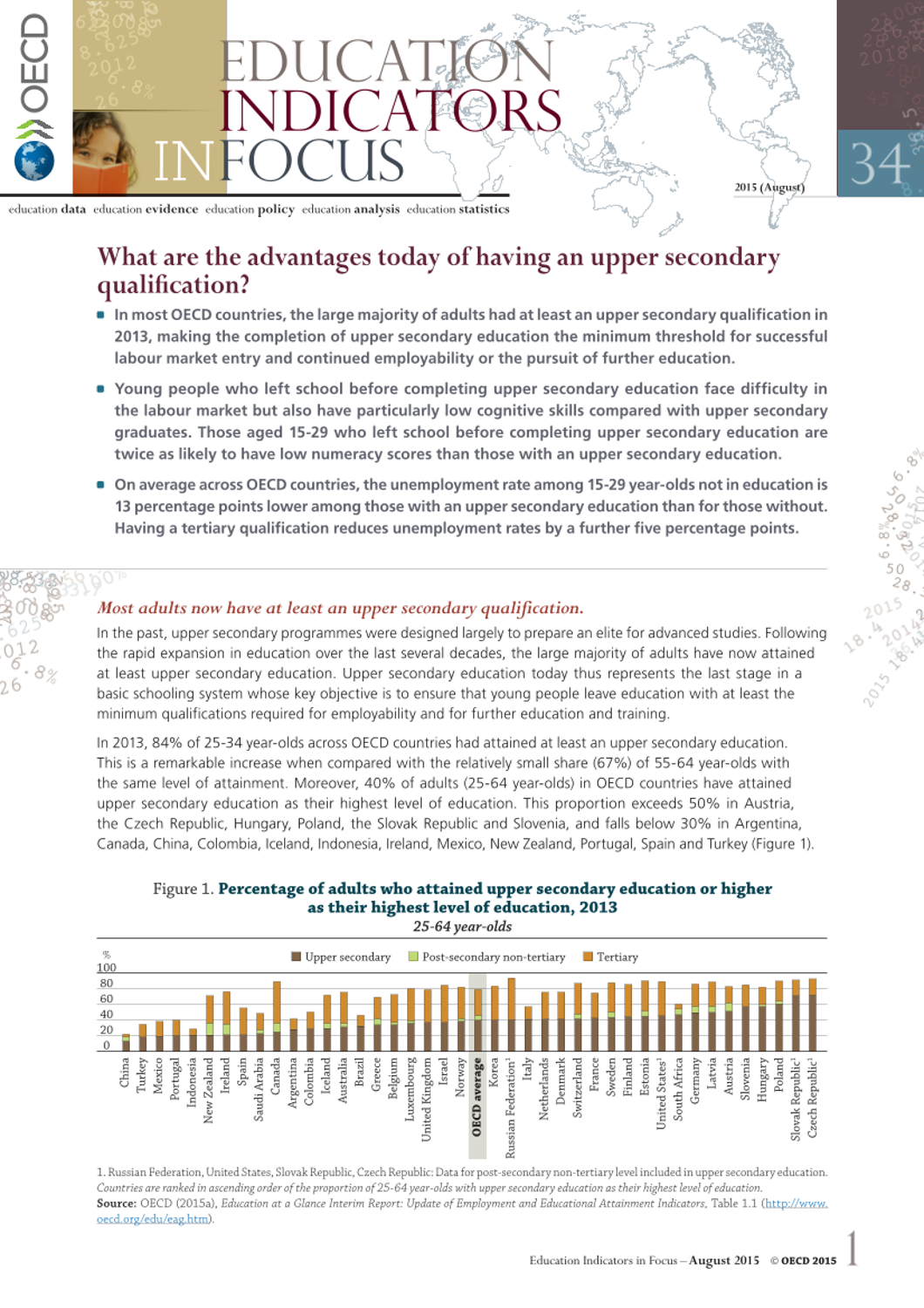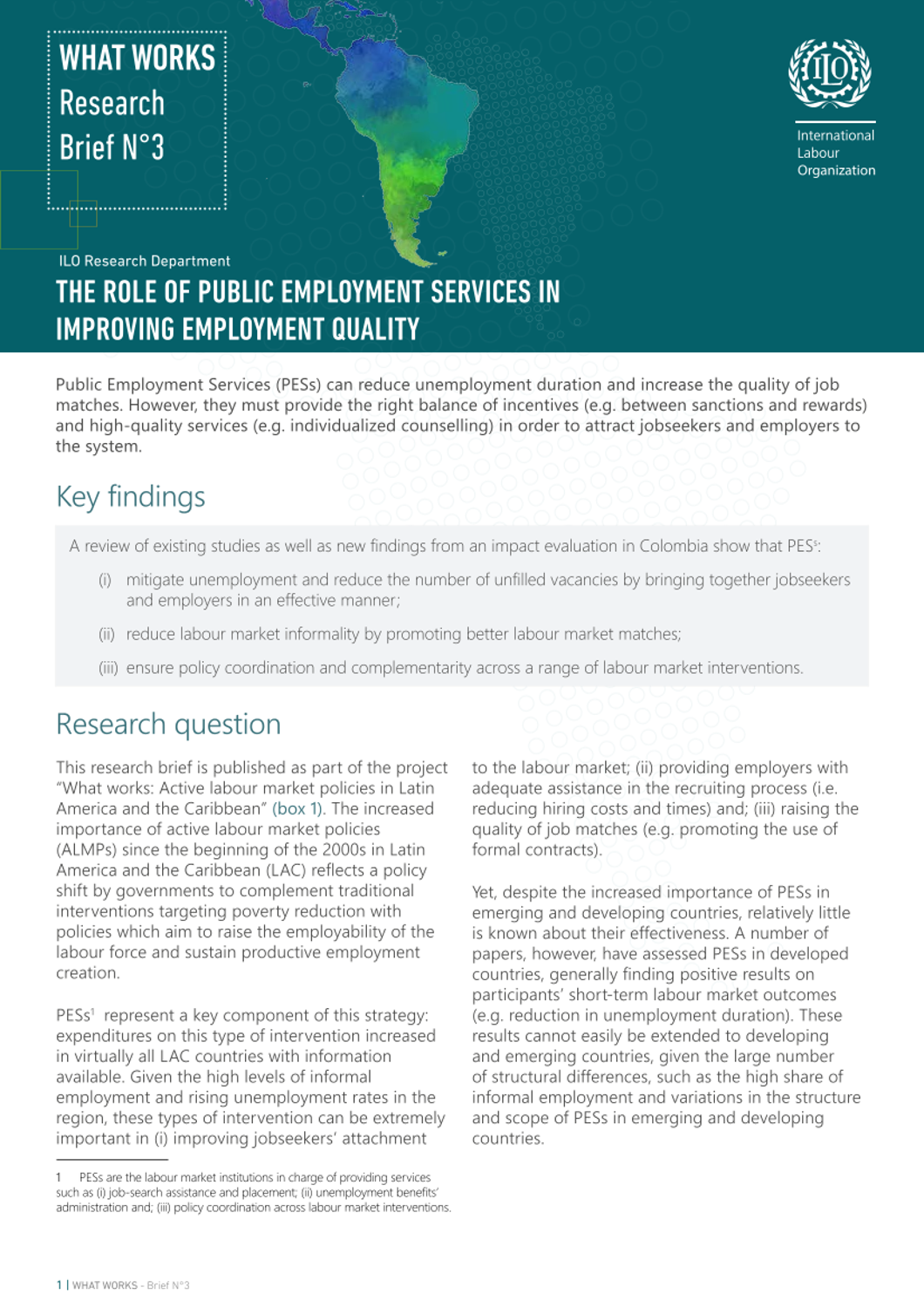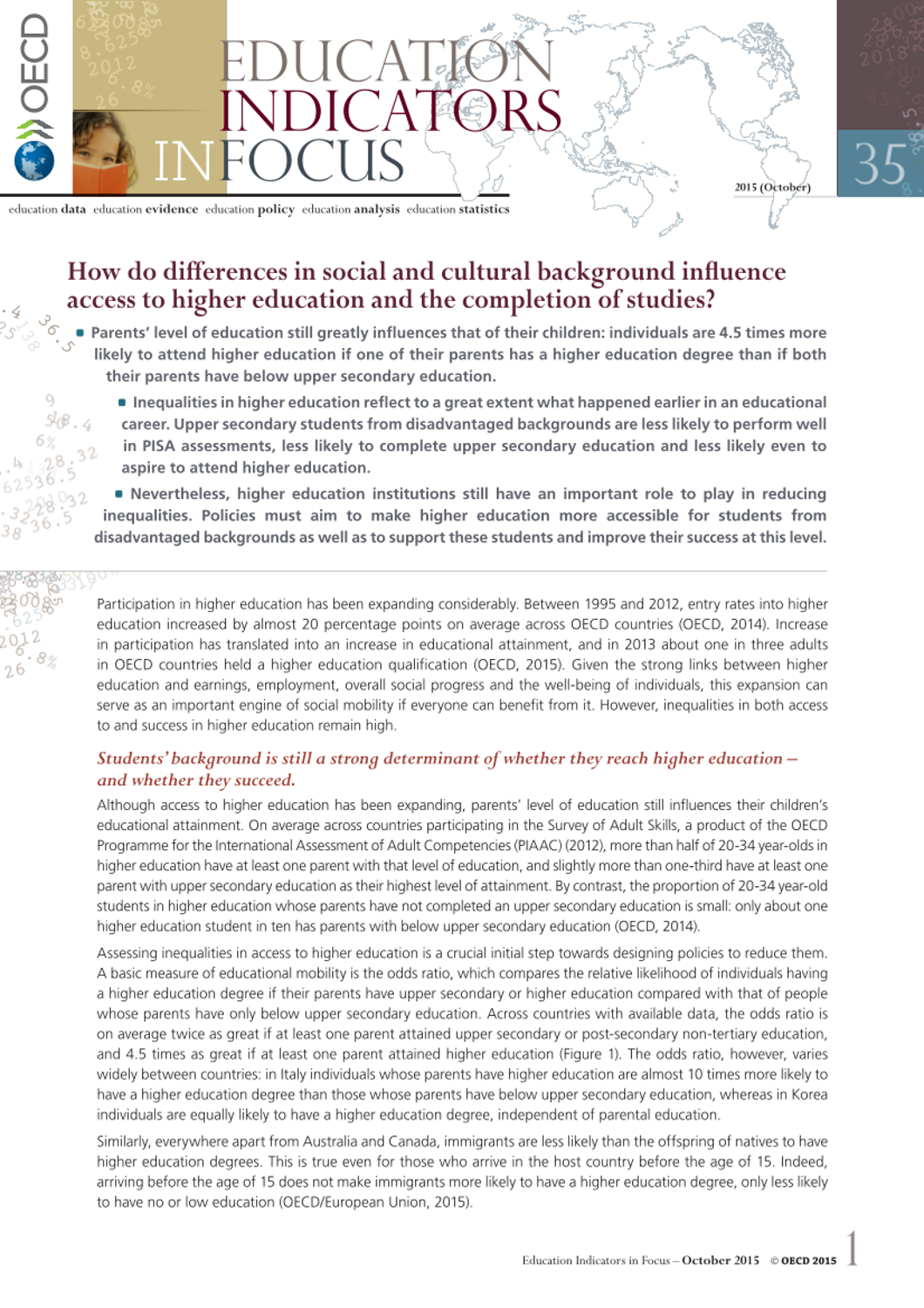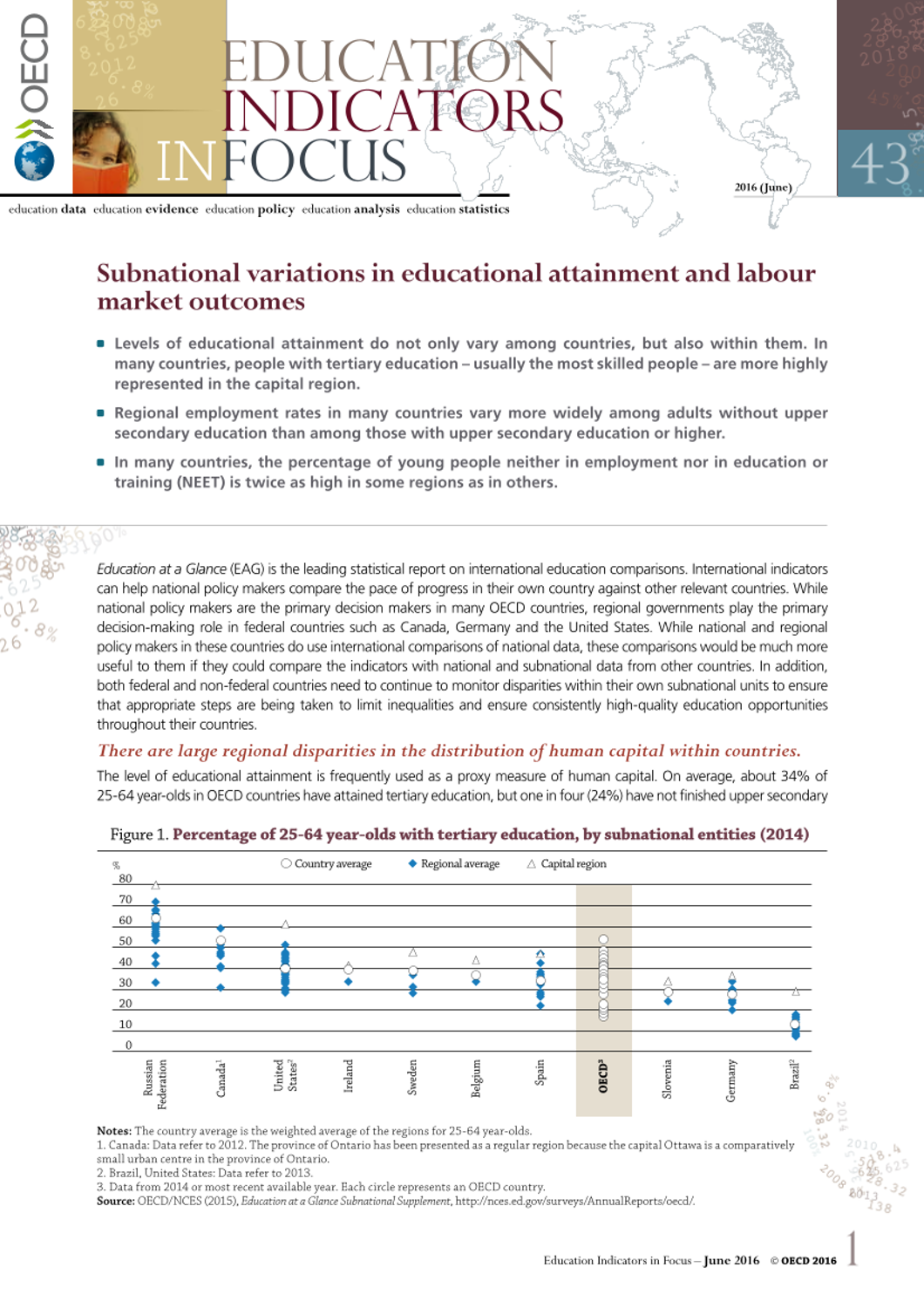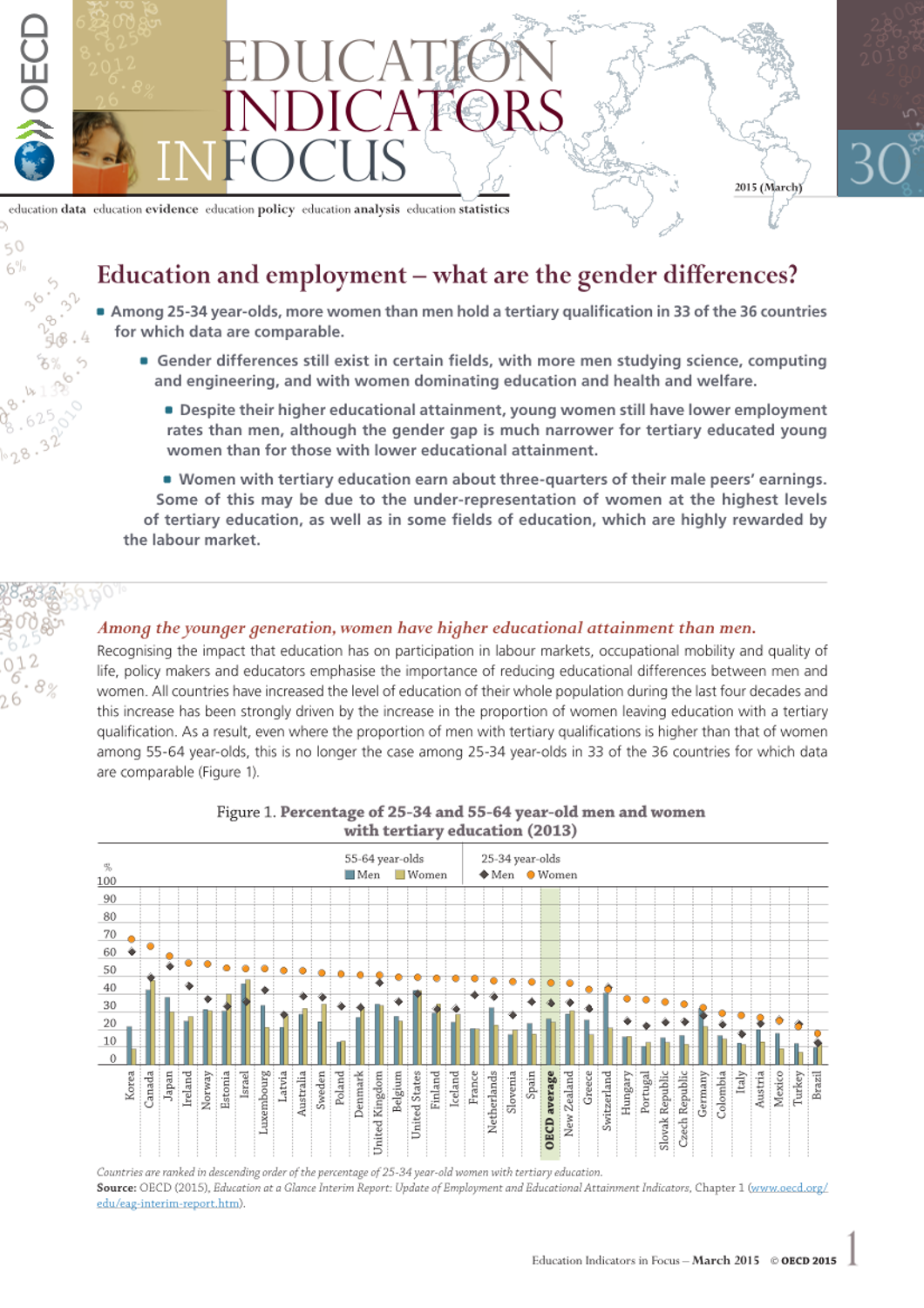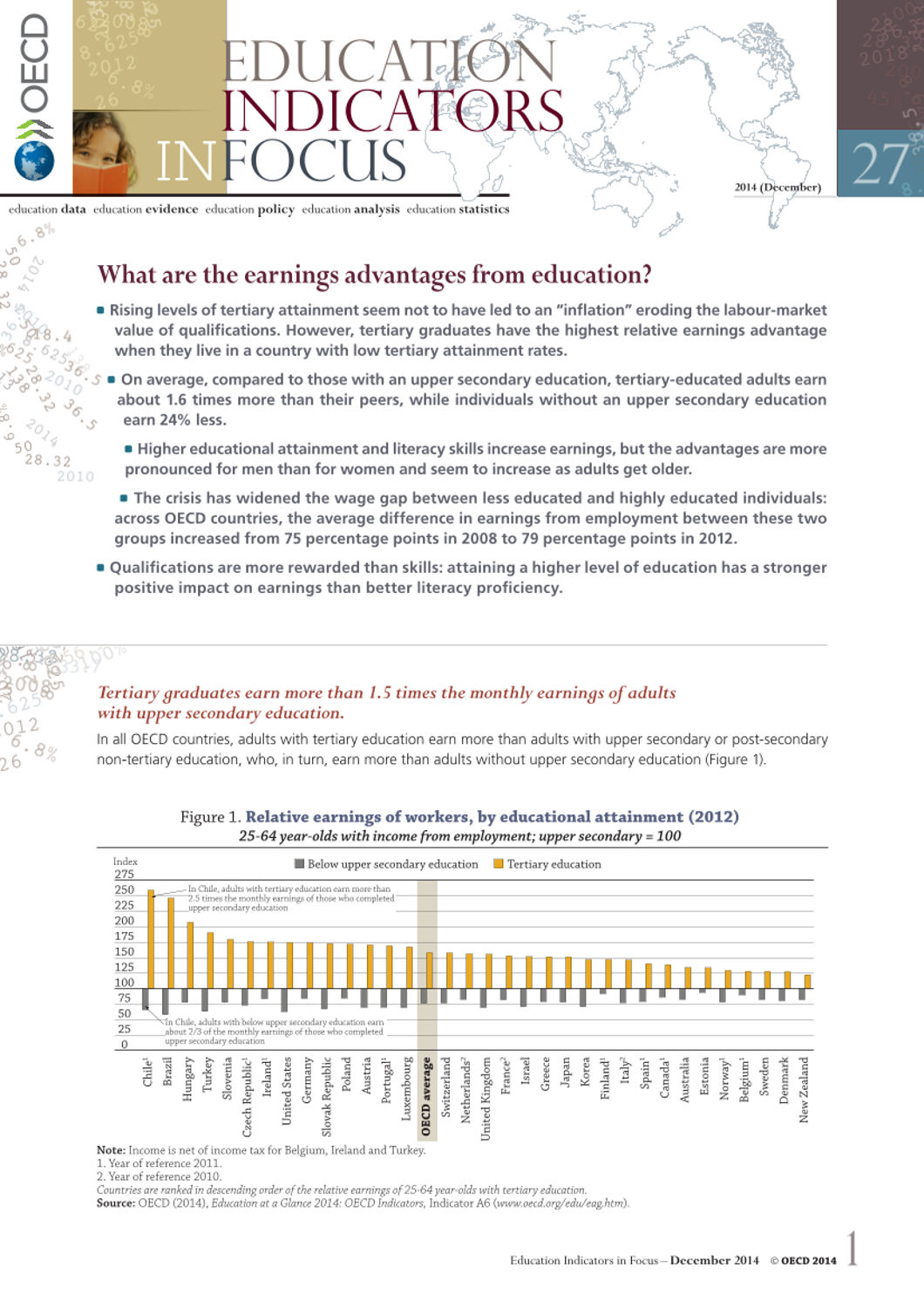연구보고서Education Indicators in Focus 34
What are the advantages today of having an upper secondary qualification?
- 단체저자
- OECD
- 청구기호
- EIF 34
- 발행사항
- Paris : OECD Publishing, 2015
- 형태사항
- 4 p. :. PDF file ;. 2,279 KB
- 바로가기
소장정보
| 위치 | 등록번호 | 청구기호 / 출력 | 상태 | 반납예정일 |
|---|---|---|---|---|
이용 가능 (1) | ||||
| E0002171 | 대출가능 | - | ||
이용 가능 (1)
- 등록번호
- E0002171
- 상태/반납예정일
- 대출가능
- -
- 위치/청구기호(출력)
책 소개
In most OECD countries, the large majority of adults had at least an upper secondary qualification in 2013, making the completion of upper secondary education the minimum threshold for successful labour market entry and continued employability or the pursuit of further education. Young people who left school before completing upper secondary education face difficulty in the labour market but also have particularly low cognitive skills compared with upper secondary graduates. Those aged 15-29 who left school before completing upper secondary education are twice as likely to have low numeracy scores than those with an upper secondary education. On average across OECD countries, the unemployment rate among 15-29 year-olds not in education is 13 percentage points lower among those with an upper secondary education than for those without. Having a tertiary qualification reduces unemployment rates by a further five percentage points.

